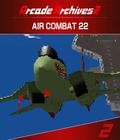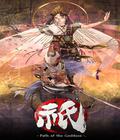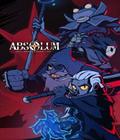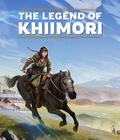![]()
Genre: Action
Publisher: THQ
Developer: THQ Australia
Release Date: November 19, 2007
![]() Avatar: The Last Airbender is a very popular American-made, anime-styled series on Nickelodeon. Between a well-written world, solid voice acting and a comedy-action balance comparable to the "Naruto" series, it's fairly easy to see why "Avatar" has been so successful among a relatively wide audience. With Avatar: The Last Airbender — The Burning Earth, THQ has made a second effort at creating solid games for the series. Surprisingly, the result is fairly successful, though few non-fans of the series will get much out of it. Well, actually, there's one other group who might get something out of it, at least for the Xbox 360 version ....
Avatar: The Last Airbender is a very popular American-made, anime-styled series on Nickelodeon. Between a well-written world, solid voice acting and a comedy-action balance comparable to the "Naruto" series, it's fairly easy to see why "Avatar" has been so successful among a relatively wide audience. With Avatar: The Last Airbender — The Burning Earth, THQ has made a second effort at creating solid games for the series. Surprisingly, the result is fairly successful, though few non-fans of the series will get much out of it. Well, actually, there's one other group who might get something out of it, at least for the Xbox 360 version ....
Gamerscore fanatics probably already know about this, as do many people who read game-related blogs, but all the achievements in The Burning Earth are based on the combo lengths that you can string up. Further, the title's combo mechanics are ludicrously friendly, giving you two or three seconds before the combo concludes. This, in combination with the large wave of enemies that attacks at the outset of the game, means that a player of any skill can attain 1,000 achievement points on the first level. I've verified this using melee- and range-based methods. This could mean that THQ will garner a few sales from Gamerscore fanatics who don't rent, but it's definitely not a good precedent to set and shows carelessness on the developer's behalf, which is an anomaly when considering that other aspects of the game seem to be quite well tested.
The Burning Earth is about Aang, a boy who is the latest of a spiritual lineage of world-saving Avatars — possibly the only people capable of learning the elements of all four regions of his world, a lineage passed from region to region in the precise order of Air Nomads, Water Tribes, Earth Kingdom and Fire Nation. Aang himself is born of the Air Nomads and may be the last person capable of the art due to a massacre by those of the Fire Nation, who feel empowered by an upcoming comet that will enhance firebenders to the point of invincibility. Before then, Aang, with the help of a few friends, has to master all four elements and stop them.
If this sounds rather similar to "Naruto" or "Dragonball" (any), you've got the right idea, right down to Aang's ability to go into an "Avatar State" where he has access to every power of every Avatar who has existed before him. The game's specific storyline focuses on the second season (or "book"), opening with Avatar arriving on a freshly captured Earth Kingdom capital and providing a microcosm of the entire second season's plot from there. The plot is told entirely through cut scenes before, after and at varied break points within each level, keeping a solid balance of play versus plot, while keeping things easy enough so that non-fans can follow along.
The gameplay itself is a simple 3D brawler with simple puzzle elements, and although it's fairly standard usage of a game license, it suits the series quite well. The Burning Earth notably tries to tweak the mechanics a little by emphasizing teamwork (the game is moderate in difficulty normally, but becomes ludicrously easier with a second player) and having puzzles that take advantage of various characters' abilities, but the basic rules remain the same. Large numbers of variously themed enemies show up, you hammer on the X and B buttons until they all fall down, and repeat as necessary. Bosses may have their own mild puzzle elements to figure out, but otherwise, it's all the same fun-yet-bland punching and kicking you've probably done many times before. (If you have a younger brother who's a series fanboy, you'll do many times again.) The only real difference is that chapter bosses will often end with Aang going into the Avatar state, which becomes a context-sensitive, button-pushing sequence.
The good news is that THQ did a fairly effective job at emulating the show's style, and they took great pains to make sure that combat has a better flow than other genre offerings. You can easily turn around attacks mid-combo if someone is approaching you from behind, and your ranged attacks have a well-developed automatic lock-on feature. The basic rules are relatively free of loopholes (unless you're going for the Achievements, see above), and as play progresses, the game wisely switches your playable characters quite regularly to keep things somewhat fresh.
Individual character controls are similar enough to prevent you getting thrown off, but the players do have subtle differences, and at least one character doesn't seem to work correctly without a significant amount of thought. The Burning Earth further mixes things up by including tunnel-shooting flight sequences, played from the point of view of Appa, Aang's flying bison partner. These sequences are similarly well-developed and amazingly short on bugs, but they end up being show-stealers, as Appa's sequences are more fun to play than the fighting sequences, which makes the game feel weaker.
The Burning Earth's graphics manage to do something not very common on the Xbox 360: They seem to be little more than a polygon-increased version of the PlayStation 2 graphics, but they manage to come across as perfectly serviceable during gameplay. Most notably, there is no cel-shading in sight; instead, lighting effects are kept simple to produce the same cartoony feel while neatly avoiding slowdown-related issues that could otherwise easily plague the game. Similarly, the sound and voice work keep up surprisingly well, with voice clips by the show actors sounding perfectly spot-on, and most snippets don't become grating and annoying. The music isn't especially memorable, but it follows the show's thematics very well and has a fully consistent style to it.
The ultimate catch of The Burning Earth is threefold. First, it works, but it's very simplistic. Once you've figured out the game, there are no new nuances from which to draw interest. Second, like most games based on shonen-styled series, it only occasionally catches on the comic element of the show to any effect; the result is that the story ends up feeling bland compared to the show. Third is that the game is an edited version of the second season, with no new content or development of the characters in any form; this has the side effect of making the main television series seem much less interesting than it really is. These three flaws may have been inevitabilities of the game design, but they do end up sharply contrasting the quality of the work, thus limiting the game's appeal to show fans.
For a licensed game, Avatar: The Last Airbender — The Burning Earth turned out to be a pleasant surprise. While it is ultimately bound by some of its limitations, THQ's development team deserves some praise for at least doing a solid job on the product — other than the ludicrous decision that led to the game's achievements listing. I might have been 1,000 gamer points richer as of the second paragraph of this review, but I didn't feel any better for it. I'm not sure whether this was a marketing decision by THQ or the result of lazy coding, but it sets a poor precedent, and I hope the feature doesn't return in future iterations.
Score: 6.4/10









